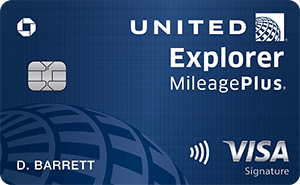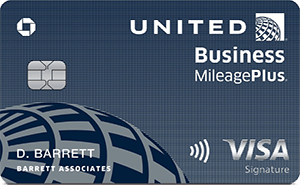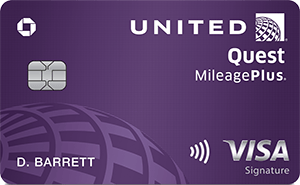United vs. American Airlines: Which Is Best for You?

Many or all of the products featured here are from our partners who compensate us. This influences which products we write about and where and how the product appears on a page. However, this does not influence our evaluations. Our opinions are our own. Here is a list of our partners and here's how we make money.
United Airlines and American Airlines are two of three large international airlines based in the United States.
American Airlines offers more flights domestically and a partnership with Alaska Airlines, making it the clear choice if you fly mostly within the United States. But if travel means crossing the ocean, United offers more options to get more places through its stronger international route map and Star Alliance partners.
Whether you’re picking the airline for your next trip or you’re trying to make a decision about which airline you want to be loyal to, here’s our comparison to help you decide.
Routes and destinations: Where the airlines fly
Winner for flight options: American Airlines
American Airlines flies about 30% more seats than United Airlines, making it a natural choice if you’re picking an airline solely on destination.
While Star Alliance gives United flyers more connectivity globally, destinations within the United States are likely more important to flyers more often. And there, American wins, not only because of its own schedule advantage, but also through its partnership with Alaska Airlines as part of the Oneworld alliance.
United Airlines destinations
United Airlines flies to more than 210 airports in the United States and 120 internationally. Although the airline operates fewer flights than American, United’s schedule is tilted heavily toward global travel — it flies to twice as many international destinations as American Airlines does.
United is a member of the Star Alliance, the oldest and largest of the three airline alliances. Star Alliance has 26 member airlines and connects 1,200 airports throughout the world. Star alliance connectivity in Europe is provided primarily through the Lufthansa Group airlines. For global travel, United has the advantage.
American Airlines destinations
American Airlines is the largest airline in the United States by departing seats. American and its American Eagle regional airlines offer daily flights to more than 350 destinations in 60 countries. On its own, American provides more domestic connectivity than United Airlines, and the Alaska partnership further increases its domestic advantage.
Internationally, American Airlines relies heavily on the Oneworld airline alliance for global connections. Oneworld is the smallest airline alliance, connecting more than 900 destinations through its 13 member airlines.
Reliability
Winner for best reliability: Tie
When Nerdwallet ran the numbers on airline reliability from January to August 2023, United and American fared about equally well. Both airlines had similar numbers for on-time performance and cancellations. American had a higher percentage of mishandled baggage and United had more tarmac delays.
United reliability
From January to August 2023, United’s on-time rate was 75.51%, about average among the large U.S. airlines, while its cancellation percentage was 2.28%. When it came to tarmac delays per 10,000 flights, United was the third worst of any of the U.S. major airlines. The airline had 0.84 tarmac delays per 10,000 flights.
American reliability
Like United, American had average reliability from January to August 2023. The airline operated 76.44% of its flights on time and canceled 1.52% of its schedule. On average, it had fewer tarmac delays than its peer airlines — just 0.39 per 10,000 flights — but it mishandled bags the most — 0.85% of bags were mishandled from January to August 2023.
» Learn more: The most reliable airlines
Fees
Winner for lowest fees: American Airlines
When Nerdwallet analyzed the fees that each airline charges, we compared several data points, including the cost of checked bags, the cost of a carry-on bag and various seat selection scenarios. When we crunched the numbers, we found that you will pay fewer fees on average when flying on American Airlines.
United fees
Checked bag fee: $35 for the first bag and $45 for the second bag, if you prepay. Checked bags that are not prepaid cost $5 more.
Same-day standby fee: $0.
Same-day confirmed fee: Fare difference applies for non-Premier members.
Change fee for U.S. originating United flights. (excluding basic economy): $0.
American fees
Checked bag fee: $35 for the first bag, $40 for the second bag, if you prepay. Checked bags that are not prepaid cost $5 more.
Same-day standby fee: $0.
Same-day confirmed fee: $50.
Change fee for American Airlines flights (excluding basic economy): $0.
» Learn more: The best airline credit cards right now
Basic economy
Winner for basic economy experience: American
United has the most onerous restrictions on basic economy of any of the airlines. You can’t select your seat, even after check-in, you can’t change your flight and you don’t even get a full-sized carry-on bag if you opt for a basic economy fare on United.
American lets you take a carry-on bag and offers a much more reasonable seat selection policy — you can select your seat after check-in. You can even use same-day confirmed and same-day standby on your American Basic Economy ticket.
Here are a few more details about basic economy on both carriers:
Basic economy on United
Full sized carry-on bags are not included (only a personal item that fits under the seat).
No seat selection.
No changes allowed.
No elite upgrades or purchased upgrades to premium cabins.
Does not earn Premier Qualifying Miles if booking a standard basic economy seat.
Basic economy on American
Carry-on bag included.
Seat selection only after check-in.
Same day confirmed and standby allowed.
Elite upgrades are allowed.
Earns miles and Loyalty Points.
» Learn more: Basic economy versus main cabin
Loyalty program
Better loyalty program: American Airlines
American AAdvantage provides more value through every aspect of its loyalty program than you’ll get with United MileagePlus. You’ll earn more valuable benefits at every tier of elite status, and you’ll earn miles that can be more useful.
United’s award tickets have gotten more expensive recently, while American still offers decent-value sweet-spot awards. And this is reflected in the numbers. According to Nerdwallet's analysis, you’ll get an effective 4.89% rebate through United’s program versus a much more generous 7.10% rebate when you fly with American.
United MileagePlus
United MileagePlus offers a variety of benefits for frequent flyers like upgrades, access to Economy Plus seating, complimentary checked bags and increased mileage earnings on United flights.
At the higher tiers, you’ll earn PlusPoints, which you can redeem toward upgrades, including upgrades from discounted United economy fares to United’s Polaris international business class.
According to NerdWallet's estimate, United elite status isn’t worth nearly as much as status in American’s program — at every program tier, you’re likely to get only about two thirds of the value from United Premier status that you might get with comparable status with American.
Like other programs, you can earn Premier Qualifying Points, the points you need for status on United through credit card spending.
» Learn more: The complete guide to United MileagePlus
American AAdvantage
American AAdvantage was one of the highest-value elite programs of any airline. As you progress through the levels of AAdvantage status, from Gold through Executive Platinum, you get increasing benefits that include complimentary baggage, free upgrades and increased earnings on your flights.
The perks you earn with American status are more valuable at every level than comparable status you’ll earn with other U.S. airlines. You’ll get the biggest value premium with Platinum Pro status, which NerdWallet estimates is about 172% as valuable as Delta Platinum status, one of its closest competitors.
One advantage of American’s program is that you can earn status through a combination of credit card spending or through flying. American uses a metric called Loyalty Points to determine your status level.
You’ll get between five and 11 Loyalty Points for each dollar you spend on American flights, depending on your status level, and one Loyalty Point for every dollar you spend on purchases on an American Airlines credit card.
This flexibility means that you have more opportunities to earn status with American Airlines.
Business class
Winner: United Airlines
United Airlines and American Airlines both offer excellent business class products. Both American Flagship business class and United Polaris are lie-flat products that come highly reviewed.
Ultimately, if you’re paying for business class tickets, a marginally better hard product isn’t likely going to be worth taking a connection — and that’s what puts United ahead. United Airlines has more international scheduled flights than American, giving it the edge for business class travelers.
The bottom line
For domestic flyers, American is hands-down the better choice.
You’ll get a better elite program, more flights within the United States, and if you book the cheapest basic economy tickets, you will at least be able to carry your luggage onto the plane without paying a fee.
But if you fly internationally, the strength of United’s international network, plus its connections to Star Alliance carriers, will give you the most options as you crisscross the globe for work and leisure.
How to maximize your rewards
You want a travel credit card that prioritizes what’s important to you. Here are our picks for the best travel credit cards of 2024, including those best for:
Flexibility, point transfers and a large bonus: Chase Sapphire Preferred® Card
No annual fee: Bank of America® Travel Rewards credit card
Flat-rate travel rewards: Capital One Venture Rewards Credit Card
Bonus travel rewards and high-end perks: Chase Sapphire Reserve®
Luxury perks: The Platinum Card® from American Express
Business travelers: Ink Business Preferred® Credit Card
on Chase's website
1x-2x
Miles50,000
Mileson Chase's website
1x-2x
Miles75000
Mileson Chase's website
1x-3x
Miles60,000
Miles




